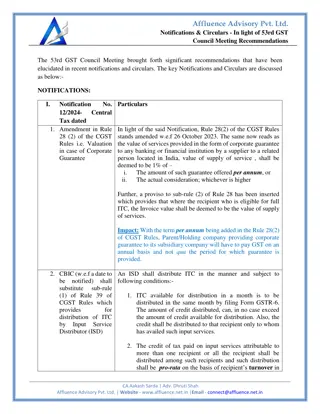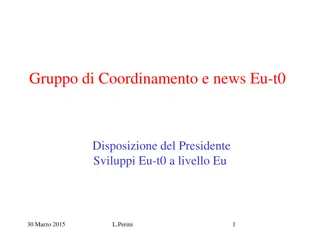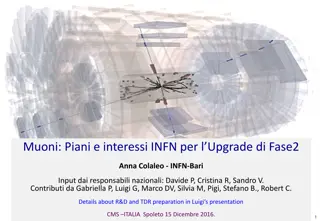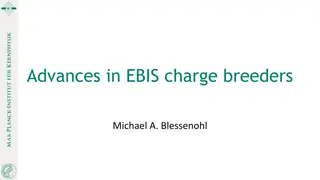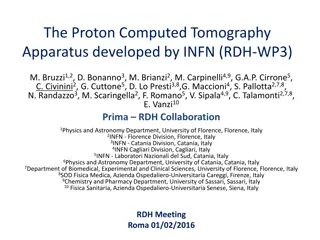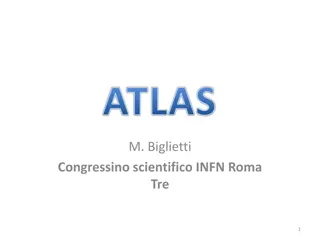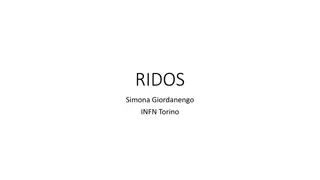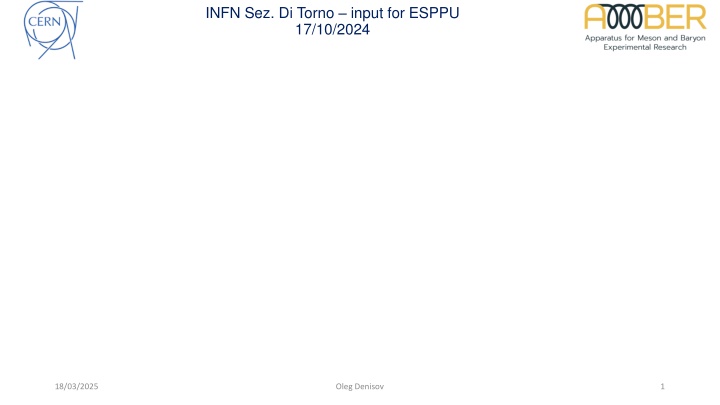
Emergence of Hadron Mass at CERN's AMBER Experiment
Explore the physics program at CERN's AMBER experiment, investigating the nature of hadrons and the fundamental particles of quantum chromodynamics. Discover the questions surrounding hadron mass and the mechanisms of quarks and gluons in forming stable structures. Join the AMBER collaboration in unraveling the mysteries of visible matter and subatomic particles.
Download Presentation

Please find below an Image/Link to download the presentation.
The content on the website is provided AS IS for your information and personal use only. It may not be sold, licensed, or shared on other websites without obtaining consent from the author. If you encounter any issues during the download, it is possible that the publisher has removed the file from their server.
You are allowed to download the files provided on this website for personal or commercial use, subject to the condition that they are used lawfully. All files are the property of their respective owners.
The content on the website is provided AS IS for your information and personal use only. It may not be sold, licensed, or shared on other websites without obtaining consent from the author.
E N D
Presentation Transcript
INFN Sez. Di Torno input for ESPPU 17/10/2024 18/03/2025 Oleg Denisov 1
Proposal Phase Proposal Phase- -2 and input to ESPPU 2 and input to ESPPU Phase-2 Proposal: Deputies - ESPPU contribution to the overall CERN paper. Collected via PBC initiative, QCD (Bjoern, Jan ~ 2 pages deadline is end of October) and CB subgroups (Oleg, Moritz 1 paragraph, the same deadline). STATUS? - 18/03/2025 Oleg Denisov 2
Running plan short term Running plan short term 4 Months starting 1 July (including 1 month of commissioning) 18/03/2025 Oleg Denisov 3
Running plan long term Running plan long term 4 Months starting 1 July (including 1 month of commissioning) 18/03/2025 Oleg Denisov 4
18/03/2025 Oleg Denisov 5
AMBER at CERN - Apparatus for Meson and Baryon Experimental Research AMBER (NA66) is a recently approved fixed target experiment at the M2 beam-line in the North Area of CERN. It is a newly formed collaboration following from the successful COMPASS collaboration, which had used the same beam-line. AMBER Physics Motivation The physics programme of AMBER is driven by the question of the nature of the major part of visible matter, which is formed by the hadrons inside the nuclei of single atoms up to the giant structures in stars. Hadrons have many features that can be well explained by a substructure of quarks and gluons, which are the fundamental particles of the theory of quantum chromodynamics (QCD). While this theory is well-defined in principle, real-life calculations are in some regards difficult and accurate predictions, based on the first principles of QCD alone, are not available in many aspects of how these fundamental particles form stable or almost stable hadrons. Most prominently, it is not clarified how hadrons acquire their mass by the binding of the almost massless quarks and gluons, and how the large difference between the ground-state baryon and meson masses comes about. This basic question about the Emergence of Hadron Mass (EHM) is linked to the mechanism of dynamical breaking of the chiral symmetry of QCD. This mechanism assumes the light mesons, pions and kaons, to be massless in the chiral limit they are the respective Goldstone bosons and their mass is connected largely to symmetry breaking, while the baryon masses are much less affected by this mechanism. Beyond the proton being about seven times heavier than the pion, there are many more intriguing observations in the properties and interactions of hadrons. They are reflected, in the partonic picture, in the structure functions for quarks and gluons, which are studied for nucleons through deep-inelastic scattering and for mesons best in Drell-Yan processes. In the integral view of hadrons, the nature of the binding of the partons determines ultimately the size of the hadrons, reflected in their charge radii, and other properties such as their polarisabilities. The mechanism of how the quark-gluon binding leads to those observable quantities, is intimately linked to the understanding of EHM and thus, how QCD is responsible for the observable properties of hadrons. The planned AMBER measurements aim to deliver many new experimental constraints to achieve a better knowledge on how the hadron masses and other hadron properties emerge. AMBER Collaboration and Physics Programme at the CERN M2 Beamline The AMBER collaboration consists of more than 35 institutions worldwide, reflecting the wide-ranging physics interest in its unique capabilities. The main spectrometer follows and reuses largely the existing COMPASS spectrometer, with additional targets and detector systems added to meet the current and future needs of the new physics programme. This rich programme is starting in 2023 and will last for well over a decade to realise. AMBER will make use of the versatile beam delivery available at the M2 beam line. This beam line is fed by the SPS proton accelerator and a production target providing muon, proton, pion and kaon beams of both charges with energies ranging from 50 GeV up to 280 GeV. The physics programme consists of a variety of topics in hadron structure and spectroscopy, making best use of the versatile beams and flexible target configurations. It is divided into two phases, the second phase aiming for much higher beam intensities for meson beams. AMBER Phase-1 The approved first phase of experiments will address three main physics questions: First, the size of production cross sections for antiprotons off Helium targets using proton beams, to be determined with high precision over an energy range from 50 GeV to 280 GeV. This is a crucial 18/03/2025 Oleg Denisov 6
input for dark matter searches. Second, in the context of the proton radius puzzle, the measurement of the proton charge radius following the form-factor method with a high-energy muon beam of 100 GeV. Third, the pion and kaon parton distribution functions (PDFs), which will be accessed through Drell-Yan and charmonium production measurements using both negatively and positively charged meson beams with an energy of 190 GeV. Antiproton production cross sections Observations of the relative motion of the galaxies and their rotation curves point to the existence of large amount of matter not emitting e.m. radiation but producing a relevant gravitational pull. This dark matter seems then to occupy large halos around the visible part of the galaxies. Measurements of large-scale structures of the universe and of the cosmic microwave background (CMB), converge to a model where the dark matter (DM) represents more than 95% of the universe matter content and indicates that this DM is completely different from what we know. The CMB observations point to the fact that dark matter must be electrically neutral, massive, and non-baryonic. This de facto excludes all the known elementary particles. The nature and origin of the dark matter represent one of big unknowns in our understanding of the universe. Anti-protons are naturally expected in the cosmic rays, that in general are instead dominated by the proton and helium nuclei components. They are produced when protons and He collide with the so called Inter Stellar Medium (ISM), which in turn is mostly made of protons and He nuclei. These collision of the type p-p, p-He, He-p and He-He produce all sorts of elementary particles that stay within the cosmic ray flux as consequence of their kinematics. The heavier particles eventually decay, so that antiprotons in cosmic rays are either directly produced in the interactions or stemming from the decay of other particles. Overall, antiprotons represent a cosmic-ray fraction of 10-4 with respect to protons. Antiprotons can also originate from the annihilation or decay of dark matter particles. These DM-originated antiprotons might be sufficiently abundant to produce a visible additional component to the one from ISM collisions. This scenario is a classical particle physics situation, where the ISM antiprotons represent the background over which we search for possible DM signals. AMS-02 has produced a very accurate measurement of the antiproton flux up to 400 GV rigidity and current uncertainties in the standard nuclear physics production cross sections are a dominant source in the prediction of the expected antiproton ISM background. Several interesting measurements have been done recently, which include antiprotons from p-p collisions at CERN SPS energies (NA61) and p-He at several TeV using the LHC beam (LHCb). However, there is a substantial lack of knowledge of the antiproton production cross sections from p-He collisions at CERN SPS energies (50 to 300 GeV). Considering that p-He produce roughly 40% of the cosmic ray ISM antiprotons, this represents a significant uncertainty that is important to be reduced. AMBER will perform precise antiproton production cross section measurements from a secondary proton beam impinging on liquid helium target with beam energies ranging from 50 to 280 GeV. The AMBER spectrometer allows for a full reconstruction of the interaction events and its RICH detector allows for the identification of antiproton tracks. AMBER will provide a double differential (momentum and direction of antiprotons) cross-section measurement at four proton beam energies in the range from 50 to 280 GeV; that is in the kinematic range where current AMS-02 data suffer most from nuclear cross section uncertainties. Proton radius Understanding the size of the most fundamental baryon, the proton, is a crucial measurement in hadron physics and beyond. It is known for more than a decade that measurements using electron scattering to extract the proton s electric form factor and extrapolating it to the real photon point are in disagreement with high precision spectroscopic measurements using normal and muonic hydrogen atoms. Various experiments and methods in electron scattering have been performed, are still ongoing or planned to shed light on the problem. One measurement, namely 18/03/2025 Oleg Denisov 7
AMBER Phase-2 SPS delivers a large variety of beams to the CERN North Area. In Phase-1, AMBER uses the muon, pion, kaon and proton beams with a variety of fixed target configurations, similarly to the preceding COMPASS experiment. In Phase-2, measurements are foreseen that make use of an upgraded M2 beamline, aiming at enriched and more intense kaon beams, for which two options are discussed. The kaons in the existing M2 hadron beam may be separated by a radio-frequency method, allowing to dump the predominant pion and (anti)proton components. Since this does not increase the total number of available kaons, enhancements along the beamline allowing for a more intense hadron beam are also investigated. One of points to address with enhanced kaon beams is the continuation of the meson structure programme via the Drell-Yan process, as described above. Prompt Photons The kaon-induced prompt-photon production is an alternative way to access the quark and gluon structure of the kaon via the quark-antiquark annihilation and gluon Compton scattering processes as well as the inclusive production of neutral pions. These measurements are an important and independent complement to the DY and charmonia studies. Data taking with positive and negative kaon beams will help separating the two processes. Meson-Photon Reactions in Peripheral Collisions with Nuclei Similarly, the intense kaon beam delivered to AMBER will allow unique experiments in the spectroscopy of strange mesons and exploration of kaon low-energy parameters in ultra-soft collisions with nuclei, so-called Primakoff reactions. Primakoff reactions give access to interactions of the beam particle with a photon from the electric field of the scatterer, here to kaon-photon reactions. Most prominently, with the elastic process, in which an outgoing photon and a kaon are observed, the kaon polarisability can be measured for the first time. Beyond that, in further final states including a neutral pion, or more pions or kaons, other aspects become accessible. In case of a single neutral pion, a low-energy coupling constant analogous to the chiral anomaly can be determined, the latter describing the coupling of three pions and a photon. For states with more mesons in the final state, a partial-wave analysis can reveal the contributing resonances and thus allows access to their coupling to the kaon-photon initial state, described by the radiative width of the resonances. Hadron Radii As indicated above, one of the physics programs of phase-1 of AMBER is the measurement of the proton radius in muon-proton elastic scattering. As for mesons such measurements cannot be performed in fixed-target kinematics, the alternative is to measure the elastic scattering of high-energetic mesons off atomic shell electrons in a fixed target. This technique has been used by previous experiments at CERN and Fermilab in the 1980s. AMBER will use the more intense kaon beams of the M2 beamline, combined with a modern readout system that allows to increase the statistics and the kinematic range of the measurement, and aims at determining the kaon charge radius with an about factor 10 better precision than currently known. Since the beam consists of a mixture of predominantly pions, kaons and (anti)protons, the measurement on the pion can be done in parallel with high statistics. At the same time, this opens the opportunity for a first determination of the radius of an anti-nucleus, namely the antiproton. The Strange Meson Spectrum For most of its history our understanding of hadron spectroscopy has been based around the quark model picture. In this, baryons are understood as combinations of three quarks, while mesons consist a quark and anti-quark pair. Our current experimental picture of hadronic states challenges the quark model expectations with both many missing and additional states that do not fit the model. From QCD inspired models beyond the baseline quark picture hadrons have been built with additional quarks and antiquarks; gluonic excitations; and states of pure gluons. The expectation is that if it is possible to construct such states via the strong interaction then they should appear in particle interactions in a similar manner to standard quark model hadrons and therefore be measurable providing an excellent test of non-perturbative QCD. Possibilities allowed within QCD beyond the quark model include tetraquarks, mesonic molecules, glueballs, and hybrid states. lution sensors for visible light photons which would find a wealth of applications in medical technology. 18/03/2025 Oleg Denisov 8
AOB 18/03/2025 Oleg Denisov 9










